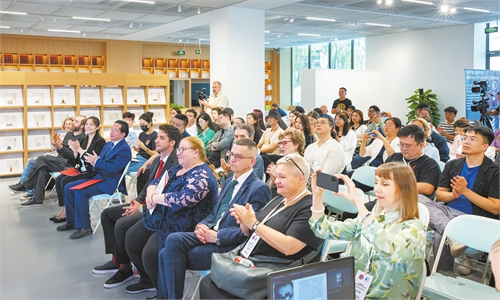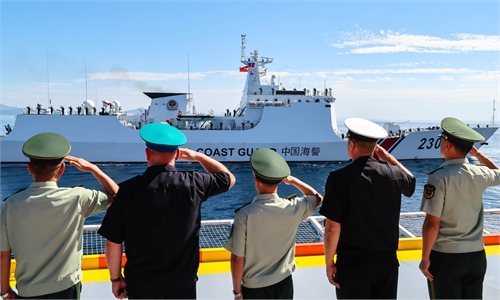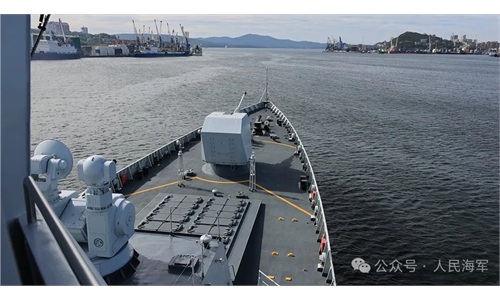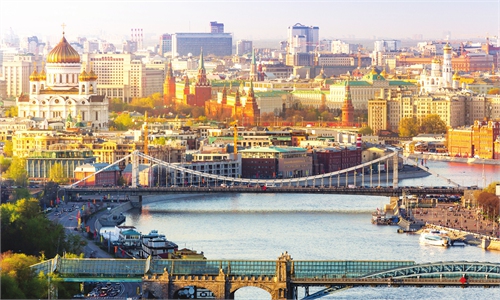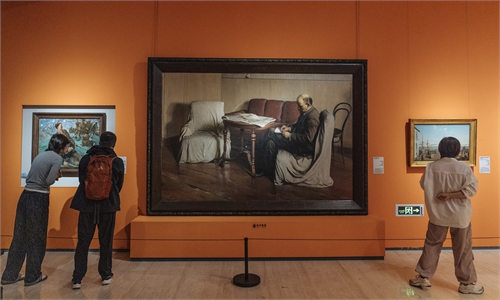ARTS / CULTURE & LEISURE
Beijing exhibition boosts understanding of art history
56 Russian paintings on display
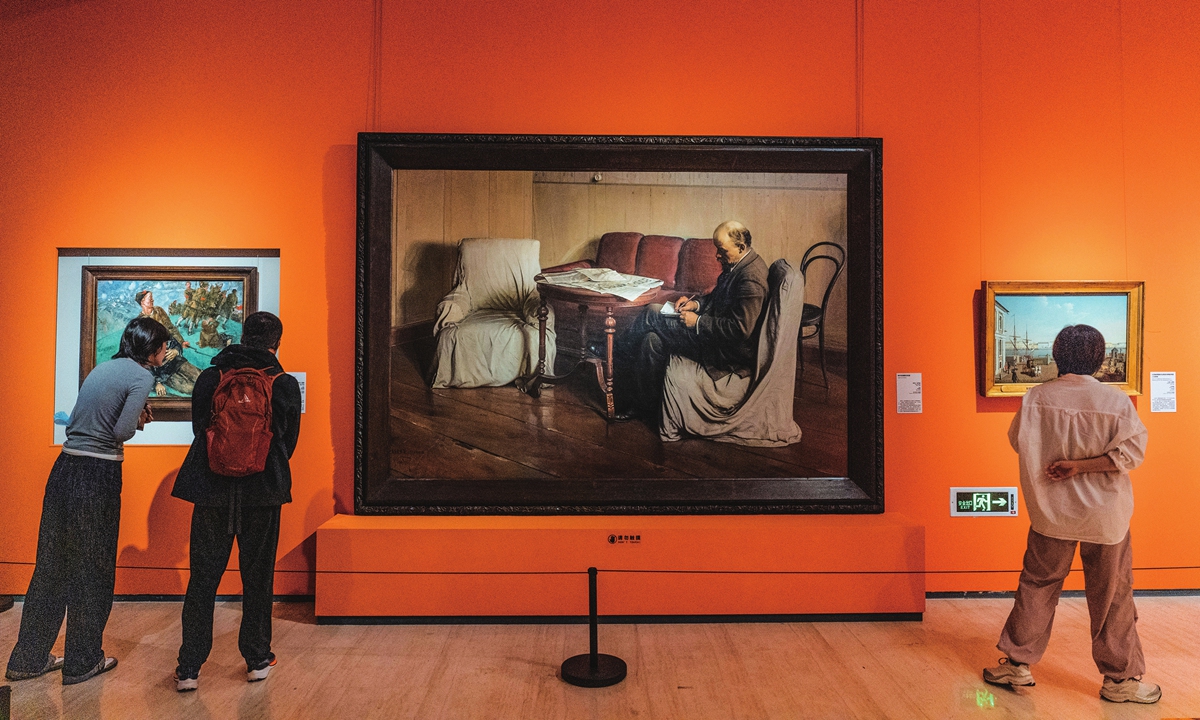
Visitors explore an exhibition of 56 masterpieces, including Lenin in Smolny (center), from Russia's State Tretyakov Gallery at the Capital Museum in Beijing on September 25, 2024. The exhibition covers more than 500 years of Russian art history, from the 16th century to the present. Photo: Li Hao/GT
A total of 56 paintings from Russia's State Tretyakov Gallery are now on exhibition at the Capital Museum in Beijing as this year marks the 75th anniversary of China and Russia establishing diplomatic ties.The exhibition, titled The Soul of Russia, is running from September 15 to December 8. It features 56 masterpieces by prominent Russian artists such as Ilya Repin, Ivan Shishkin, Vasily Tropinin, Ivan Aivazovsky and Vasily Surikov, covering more than 500 years of Russian art history - from the 16th century to the present.
"The Chinese viewer can experience a retrospective of Russian art from iconic paintings to the second half of the 20th century," Director of the State Tretyakov Gallery Elena Pronicheva told the Global Times through an interpreter.
"Regardless of the historical period, visitors will see the ideals that Russia lived by during this historical period and through."
Jointly organized by the Capital Museum and Russia's State Tretyakov Gallery, the exhibition spans diverse themes and styles, illustrating the rich cultural heritage and artistic diversity of Russia.
The artworks are divided into four sections: landscapes, portraits, daily life, and historical scenes, offering a comprehensive look into Russia's natural beauty, people, and history.
High-profile artworks include Lenin in Smolny and Portrait of A.M.Gorky by Isaak Brodsky, Portrait of Anton Chekhov by Osip Braz, and Stormy Sea by Aivazovsky.
2024 and 2025 have been designated as Years of Culture between China and Russia.
"Culture as a kind of social sphere helps us get to know each other better, because we are neighbors," Pronicheva told the Global Times.
"Besides borders, we are also quite close to each other in thinking, we have a lot in common."
This exhibition aims to deepen cultural exchange between China and Russia.
It offers Chinese audiences a rare perspective on Russian art and culture while fostering mutual understanding between the two nations.
"Through our exchanges with the Russian side, we are able to deepen our understanding of each other and of ourselves. This is an expression of the mutual learning between civilizations and the coexistence of cultures," Yu Runsheng, a professor of the Central Academy of Fine Arts, told the Global Times.
"That we are able to organize such an exhibition demonstrates that our understanding of Russian painting and the entire history of Russian art has surpassed previous levels."
Previous exhibitions held in China featuring Russian paintings from the Tretyakov Gallery were mainly focused on a single topic rather than presenting a more comprehensive view like the current exhibition, according to Yu.
He noted that the theme and overall outline of the exhibition were proposed by a Chinese academic team before communicating with Russian institutions, selecting the pieces they could provide to finalize the exhibition.
The Tretyakov Gallery is one of the most prominent art museums in Russia, renowned for its vast collection of Russian fine art.
Founded in 1856 by merchant and art collector Pavel Tretyakov, the gallery houses over 180,000 works, spanning from early religious iconography to contemporary art.
In 1949, the Soviet Union became the first country in the world to establish diplomatic relations with the People's Republic of China.
Since then, Russian art has had a lasting impact on Chinese artists.
